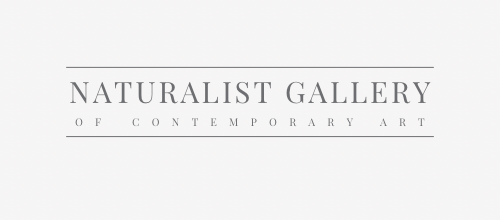Renaissance art is a remarkable period in European history marked by a profound resurgence of classical learning, humanism, and artistic innovation.
Renaissance art, from 14th to 16th century, a cultural rebirth in Europe. Influenced by classical ideals, humanism, & patronage, it birthed masterpieces like Mona Lisa, David, & The Last Supper. A timeless testament to human creativity & artistic vision.
We delve into the origins, influences, and key figures of the Renaissance art movement, exploring its impact on the cultural landscape of Europe and its enduring legacy in the world of art.
Explore our curated selection of contemporary artists from around the globe.
Naturalist Gallery offers artist representation internationally. Apply your art.

Leonardo da Vinci, Andrea del Verrocchio 1472–1476 The Annunciation
I. The Origins and Influences of Renaissance Art: The Renaissance emerged in Italy around AD 1400, parallel to developments in philosophy, literature, music, science, and technology. It sought inspiration from the art of Classical antiquity, aiming to revive and transform ancient traditions through the integration of recent artistic developments from Northern Europe. Several factors contributed to the rise of Renaissance art:
Humanist Philosophy and Rejection of Medieval Beliefs: Scholars like Erasmus, Dante, and Petrarch criticized superstitious beliefs and questioned medieval philosophy and religion, emphasizing the importance of present life and the improvement of human existence.

Dante and his Poem (La Divina Commedia di Dante), Domenico di Michelino, 1465
Rediscovery of Classical Texts: European scholars gained access to long-lost classical texts, including philosophy, prose, poetry, drama, science, and early Christian theology, leading to a revival of interest in the classical world.
Advancements in Science and Technology: Renaissance thinkers embraced a scientific outlook, questioning church rituals, and adopting advancements in mathematics and printing, enabling the dissemination of knowledge to a broader audience.
Patronage and Wealth: The rise of prosperous Italian city-states, such as Florence, fueled by trade and banking, provided ample patronage for artists, and the Medici family became prominent supporters of the arts.
II. The Florentine School and Early Italian Renaissance Art: Florence, the epicenter of the Italian Renaissance, fostered the flourishing of artistic talent. Early Renaissance artists like Giotto and Masaccio pioneered naturalistic and three-dimensional styles, breaking away from the traditional Byzantine influence. Brunelleschi's innovations in architecture and perspective further revolutionized artistic techniques, leading to the rise of great masters like Botticelli and Donatello.

Sandro Botticelli, a renowned Florentine artist, epitomized the grace and elegance of the Early Italian Renaissance in his masterpiece "The Birth of Venus" (c. 1485, Uffizi, Florence). This iconic painting depicts the goddess Venus emerging from the sea on a shell, embodying the ideals of beauty and classical mythology.
III. The High Renaissance: Leonardo da Vinci, Michelangelo, and Raphael: The High Renaissance marked the zenith of artistic achievement, with three luminaries standing tall: Leonardo da Vinci, Michelangelo, and Raphael. Leonardo, the quintessential Renaissance man, combined scientific inquiry with artistic genius, creating masterpieces like the Mona Lisa and The Last Supper.

Leonardo da Vinci's "The Last Supper" (1495–98; restored 1978–99; Santa Maria delle Grazie, Milan) is an unparalleled portrayal of emotion and storytelling, capturing the dramatic moment when Jesus announces his betrayal. The painting's composition and use of perspective elevate it to a monumental work of art.
Michelangelo, renowned for his colossal sculptures and frescoes, embodied creative power and emotion, evident in the awe-inspiring works such as the David and the Sistine Chapel ceiling.
Michelangelo's "David" (1501–04; Accademia, Florence) is a monumental marble sculpture that exemplifies the perfect balance of idealized beauty and human strength, symbolizing the triumph of the human spirit and the pursuit of excellence.
Raphael, the master of serenity and harmony, produced exquisite paintings, epitomized in the Sistine Madonna and his portraits of popes and patrons.
Raphael's "The School of Athens" (1509–1511, Vatican Museums, Rome) is a fresco that showcases the spirit of the Renaissance, bringing together classical philosophers and artists in a harmonious composition, symbolizing the pursuit of knowledge and wisdom.
IV. The Northern Renaissance: In Northern Europe, the Renaissance took on a distinct character, influenced by the region's own cultural traditions. Artists like Jan van Eyck and Hugo van der Goes excelled in detailed realism and symbolic representation, while German artists embraced oil painting and symbolism, emphasizing spiritual depth in their works.

Jan van Eyck's "The Arnolfini Portrait" (1434, National Gallery, London) is a masterpiece of Northern Renaissance art, renowned for its meticulous attention to detail and symbolic elements, offering a glimpse into the world of 15th-century Flemish society.
View limited edition prints by contemporary artists at Naturalist Gallery.
The Renaissance art movement left an indelible mark on European culture and art history. It brought together humanist ideals, classical inspiration, and innovative techniques, fostering a period of unmatched creativity and expression. The masterpieces of Leonardo, Michelangelo, Raphael, and their contemporaries continue to inspire and captivate audiences worldwide, making Renaissance art a timeless testament to the beauty of human achievement and the power of artistic vision.
Self-Portrait (1498) Albrecht Durer
You may also find the following articles helpful:
The Most Iconic Abstract Artworks of the Last Century
The 14 Essential Artists of Impressionism
Top 12 Controversial Artworks That Changed Art History
Expressionism: 20 Iconic Paintings and Their Artists
Landscape Paintings: A Showcase of 20 Masterpieces



